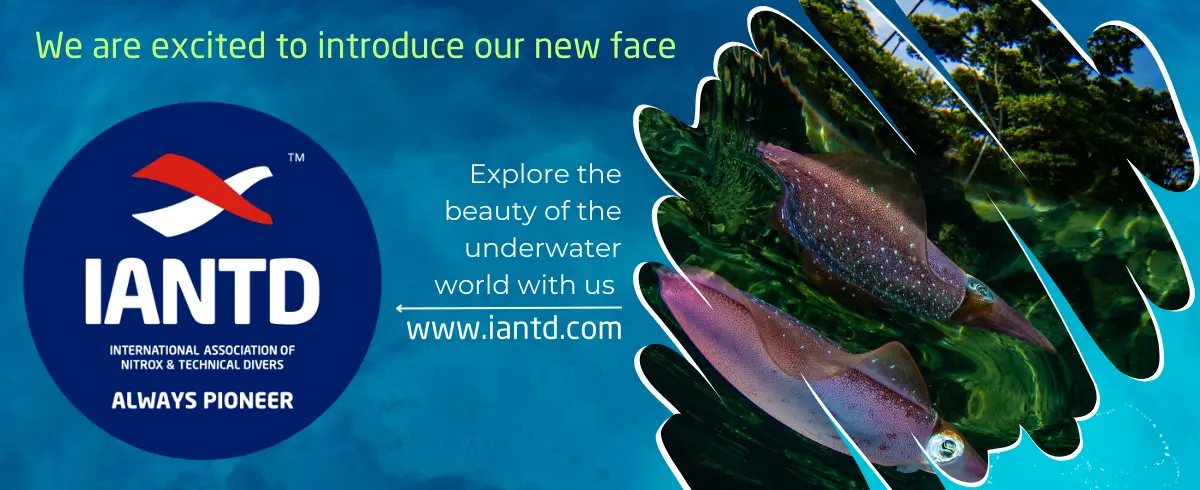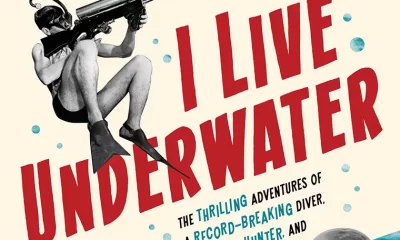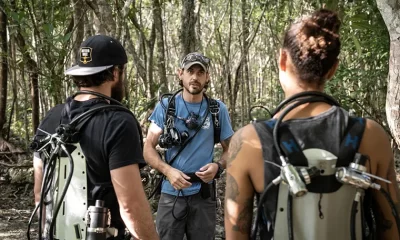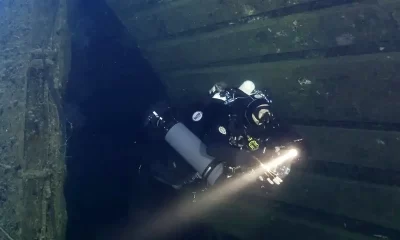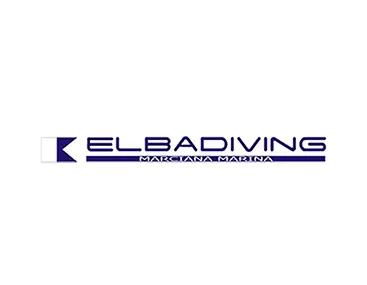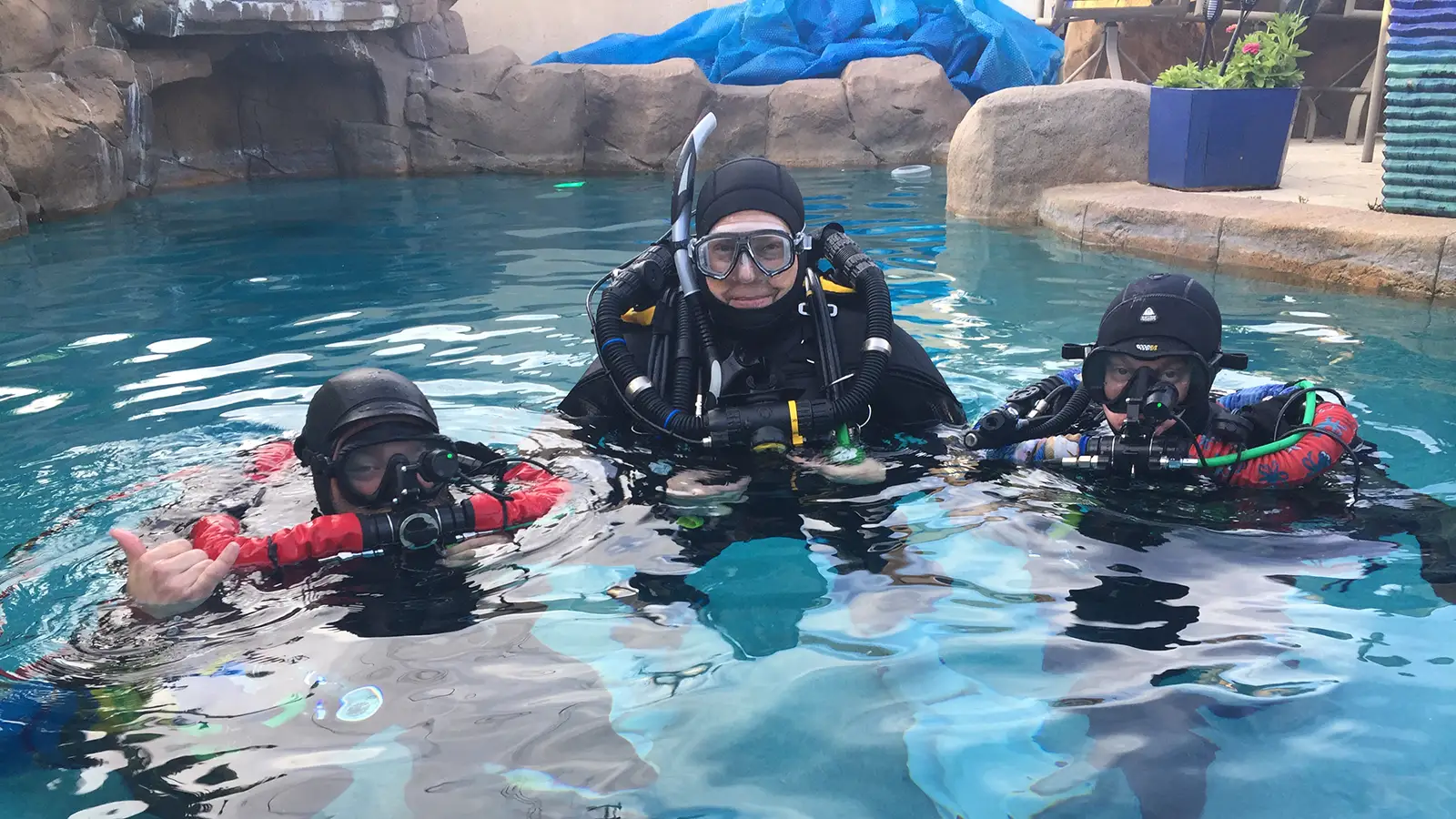
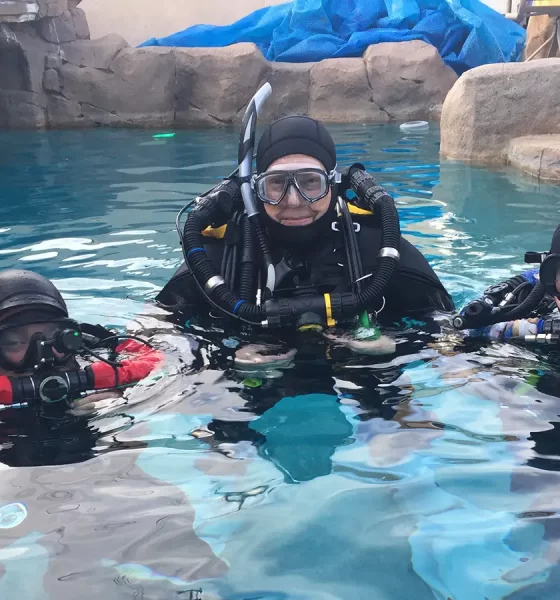
Education
Rebreather Training: Are We Certifying Ourselves into Extinction?
By Jeffrey Bozanic, Ph.D. Images courtesy of the author unless noted.
Unlike training to pilot aircraft, automobiles, or open circuit scuba gear, current rebreather training is brand and configuration specific. What’s more, according to the recently adopted ISO training standards, instructors must wear the same unit and configuration as their students. However, given the size of the market, veteran diving educator, scientific diver and rebreather graybeard, Jeffrey Bozanic argues this approach is a recipe for extinction. Instead, he proposes we need to take a ‘systems approach’ to training and develop minimum hardware standards.
When you finish reading the article, please take a few minutes and share your views with us: Rebreather Training Survey. We’ll report the results!
The other day, I rode as a passenger in my friend’s Tesla. When we stopped, I couldn’t figure out how to open the door. Driving it, it took me a bit to figure out how to turn it on. Even more challenging was trying to figure out how to operate many of the functions of the vehicle, which were controlled through electronic rather than mechanical means. Should we have type ratings for different manufacturers’ automobiles?
Introduction
We use rebreathers as tools to enable us to explore underwater, just as we use snorkels, Snuba, hookah, or open circuit scuba cylinders. Each of these tools offers advantages and disadvantages. Snorkeling is inexpensive and requires minimal training, but depths and time spent underwater are limited. Snuba or hookah extends both time and depth, but now the diver is dragging a hose from the surface and depth is still limited to (usually) about 10 msw/35 fsw. Open circuit scuba removes this limitation and also extends depth, but access to OC scuba requires training and time is limited by breathing gas supply. Rebreathers dramatically improve gas economy, allowing for longer dives; and, because the breathing gas is captured, quieter operation fosters better marine life interactions. However, the training requirements are significantly more involved, both in time and number of dives required.
Another disadvantage to rebreather training is that while the user may spend significant time and money being trained, when they finish they are qualified to use only a single unit. When the “type rating” for rebreather training was instituted, it was because there were four general types of rebreathers in general use in the sport community: oxygen closed circuit rebreathers (CCRs), mass flow controlled or “active” semi-closed circuit rebreathers (SCR), residual minute volume (RMV) keyed or “passive” SCRs, and mixed gas CCR types. Mixed gas CCRs were further subdivided into two classifications—manually controlled CCRs (mCCR) and electronically controlled CCRs (eCCR). Other types of rebreathers have been introduced—proportional valve SCRs, electronically controlled SCRs, or hybrid CCRs. However, these were not commercially available at the time training programs were being developed.

Each of these systems functioned differently with different sets of concerns and differing failure modes. Some problems which could occur with active SCRs were immaterial when using a mixed gas CCR—for example, mismatching the supply gas with the orifice in use. And while one could enumerate many examples of potential problems that are unique to the system design in use, the reality is that rebreather users face arguably 80% of the same problems, regardless of the type of system. These include, in part, scrubber failure, water leakage, valve failures, maintaining appropriate loop volumes, and buoyancy control.
Similarly, 80% of the academic content of rebreather training is identical, regardless of the type of system in use. Dive physics, human physiology, hypoxia, oxygen toxicity, hypercapnia, maintenance, and travel considerations are topics of common concern for all types of rebreathers.
When rebreather training standards were originally introduced, I expected that the number of types in use would collapse. That has in fact occurred. While the number of manufacturers and models have grown considerably, for practical purposes, the types of systems have been reduced primarily to one: mixed gas closed circuit rebreathers. Because of the advantages these systems provide, the marketplace has essentially dictated that there is little practical or economic use of other systems. Mind you, there are exceptions to this for specialty uses, but we’ll focus on mixed gas CCRs for the duration. [For example, GUE and SSI both offer training on their respective specialized SCR units; the RB80 and Mares Horizon. But those are the only such units currently on the market].
With the collapse of the four major system types to essentially a single type, I anticipated that type ratings would also collapse to a single certification or perhaps two (one each for mCCR and eCCR). This has not occurred. In fact, we now have more type ratings than ever before. That is because each individual model of rebreather is considered a “type” rating. This is a problem that is likely to doom our community to failure if we do not change it. We just don’t have a large enough market or user base to support the changes that are being proposed or have been implemented.
Current Trends
In New Orleans, at the annual DEMA (Dive Equipment and Marketing Association) trade show in November 2023, I attended several rebreather manufacturer update sessions for instructors. The message that was relayed was that instructors must wear the same unit on which the students are learning for the entire class. This is a significant change from prior standards that mandated the instructor demonstrate skills on the unit the student is using prior to the student doing them. There was an additional constraint on the standards prior to that—that the instructor must be wearing a rebreather during training.
Having the instructor wear a rebreather during training makes complete sense. Bottom time constraints and planning differ considerably between open and closed circuit diving. It also allows the instructor to demonstrate a skill when desired, which would not be possible using open circuit diving gear.
I did feel that the standard requiring the instructor to demonstrate all skills on the student’s model rebreather was overly restrictive; I had no problems teaching a desired skill to a student while using a different model rebreather. When I occasionally did have problems, we merely surfaced, discussed the skill, and then submerged again to move forward. This is one of the benefits of confined water (pool) training.
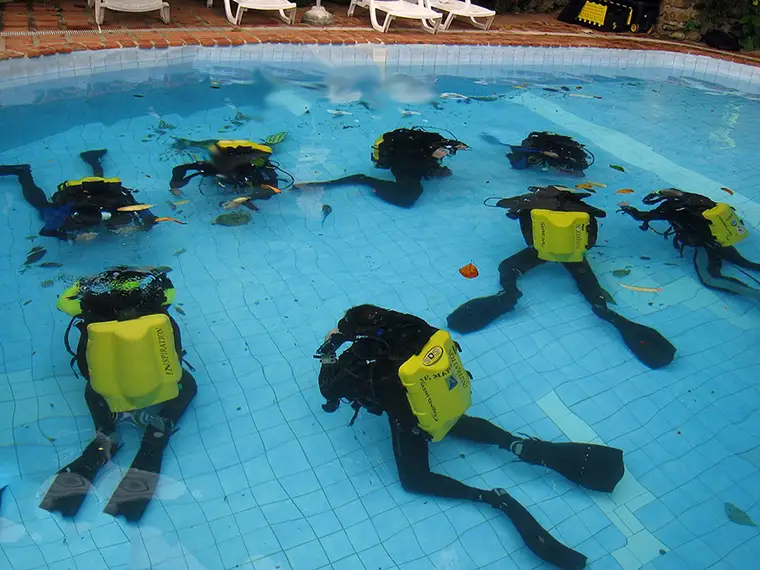
In over 15 years of teaching that way, I never experienced a problem that could not be solved in that manner, even when I had four students (the current limit is three students per instructor) wearing four different models of rebreathers with me using a fifth model. I accepted, however, that many supported the idea that initially demonstrating the skills on each system was important.I also adhere to that standard by doing just that on each unit prior to the students entering the pool on their rebreathers.
I consider the standard, “Instructors must wear the same unit on which the students are learning for the entire class” to be completely impractical.
The standard was advanced with the justification that, in order to demonstrate skills appropriately, the instructor has to wear exactly the same equipment as the student. While rebreather skills are similar, there are differences between units and components of the same unit. For example, the manner in which the DSV (dive/surface valve, or mouthpiece) is closed in the Divesoft Liberty differs from how the AP Diving Inspiration functions. Yet, even within a single manufacturer, design differences in a single component operate differently. For example, DSVs are manipulated differently than the BOVs (bailout valves, another type of rebreather mouthpiece), even with the same manufacturer. If we follow the logic proposed above, not only should the instructor wear the same rebreather as the student, the two models should be configured identically to allow the instructor to demonstrate skills throughout the class.
This may seem to make sense until one looks at the number of options there are in rebreather models. Within a single model, one might have a DSV, BOV, or ADBOV (automatic diluent add/bailout valve, another type of mouthpiece); front or back mounted counterlungs; carbon dioxide sensor or not; scrubber temperature monitor or not; off-board bailout gas options; recreational, nitrox, or trimix diluent gas options, with differing menu and configuration options; and the list goes on. Just with the examples presented above, there would be 144 different combinations, and we could posit more if we wished. Clearly it is impractical to dive in exactly the same configuration as every student. Yet, at least one manufacturer stated that the instructor must be in exactly the same system as their students.
Another manufacturer stated that the instructor could wear any of their models to teach others going through training in their rebreathers, yet that clearly violates the premise of needing to be able to model the exact skills that the student might need to observe. So, the logic behind the new standard in that case is clearly flawed.
What is driving this shift? The stated reason is a newly released ISO standard. Note that this standard was developed and released by the European Committee for Standardization. [Ed. note: The Rebreather Training Council (RTC) was responsible for driving the ISO group]This standard (ISO 24804:2022, Requirements for Rebreather Diver Training – No-Decompression Diving, approved 2022 Aug 15) states, “On all training dives the instructor and students shall use the same rebreather units.” The standard defines the “rebreather type” to be the general design, such as SCR, mCCR, or eCCR, which is consistent with the concept of the “type rating.” It further defines the “rebreather unit” as a type of rebreather having consistent controls, displays, and configuration over several rebreather models where the operation is essentially the same from model to model. A “rebreather model” is a specific, individual design of rebreather made by a manufacturer. During the DEMA meetings, different manufacturers defined this to their instructors differently.
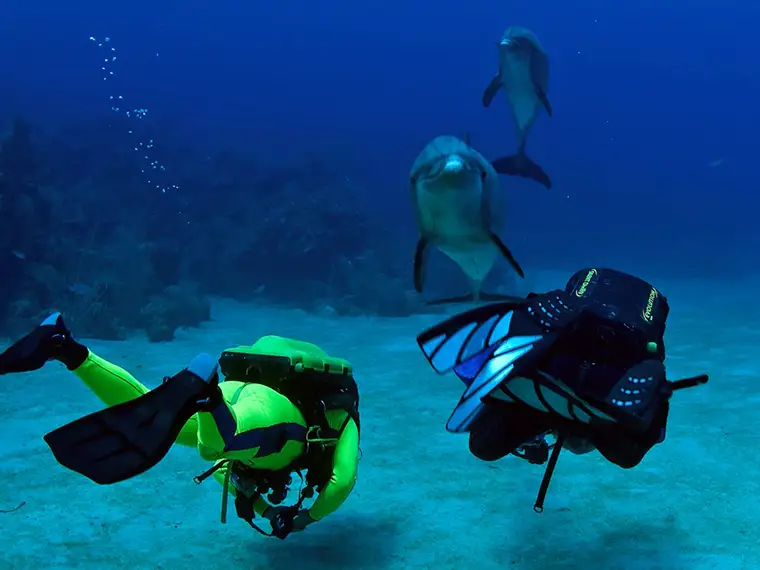
Another posited reason for the change was the intent to protect manufacturers from liability. In 2023, there were approximately 24 rebreather diver fatalities. Many of these no doubt stemmed from medical events with diver error following as the second cause. Yet, rebreather manufacturers are commonly named in wrongful death lawsuits as defendants. Any lawsuit in the United States is an expensive and time-consuming process, even if no negligence is found on the part of a given defendant. Implementing some standards may shift liability at an early stage from one party to another.
Finally, it has been suggested that requiring the rebreather instructor to wear exactly the same unit as their students is a form of manufacturer protectionism. Mandating that the instructor and students wear the same rebreather reinforces manufacturer brand loyalty.
What Should We Do?
To a degree, we have “type ratings” in vehicles. Driver licenses are issued for different classes. For example, a Basic license for motor vehicles with a gross weight of less than 10,000 pounds; a Motorcycle license; a non-Commercial Class B license for vehicles over 40 feet long, but under 45 feet; a non-Commercial Class A license for vehicles and coaches over 10,000 pounds gross weight; and Commercial licenses for Class A & B above. Each of these is defined by class, not by individual model, make, or manufacturer of the vehicle. This is analogous to rebreather type ratings associated with the types of rebreathers mentioned above: oxygen CCR, SCR, mCCR, and eCCR.
Aviation also has type ratings. In this system, the ratings are defined by the systems incorporated into the aircraft. A basic pilot’s license typically allows the holder to operate a single piston-engine under a specified weight. Other systems—such as turboprops, retractable landing gear, or variable pitch propellers—require additional qualifications, i.e. the “type rating.” Note that some countries, such as New Zealand, do not follow this system and require training on each specified model of aircraft.
We should be following a similar approach. There are two things that we should be doing to effectively implement this: (1) Institute a systems approach to training, and (2) develop minimum standards for hardware design and use.
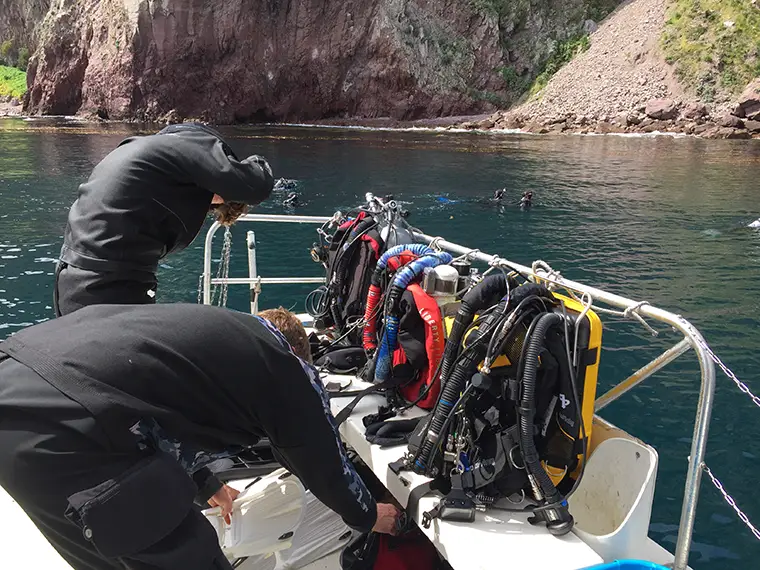
Systems Training
One method of training focuses on using repetitive practice to build the muscle memory necessary to successfully accomplish skills. Based on research conducted by Glen Egstrom, Ph.D. (UCLA Kinesiology Department), in the 1970s, a typical scuba skill must be practiced 13-17 times before the new diver is able to perform the skill acceptably. Many of the basic skills, such as reading loop PO2 or opening and closing the DSV, naturally achieve this level of repetition during the course of training. Other skills, like checking cell linearity or deploying a DSMB (diver surface marker buoy), almost never reach this level of practice.
Yet, this is the model upon which current rebreather training has been based. And to some degree, since students remember best that which they visually observe, it makes sense for the instructor to be wearing exactly the same equipment as the student. However, this type of training is extremely limiting. If we were to follow this model with open circuit diving equipment, then an instructor using a Scubapro R095 or Apeks XL4+ second stage regulator (with a typical exhaust port situated directly below the mouthpiece) should not be teaching a student using a Poseidon Xstream or a Mares SXS second stage (which have the exhaust ports to the side of the mouthpiece). Obviously, we do not adhere to that concept in open circuit instruction. And, as noted above, we seldom practice all skills with sufficient repetition to achieve mastery.
One solution to this is to change to a systems training model. This is the way many teaching programs are designed, such as our current scuba programs and driver education programs. Instead of teaching in a manner that relies solely on memorization and muscle memory, we teach systems: use and function of brakes, accelerator, turn signal indicators, seat belts, lights, windshield wiper blades, and so on. This develops an understanding of what the systems do and how to apply them in at least one example vehicle.
Later, the student informally cross-trains on their own to other vehicle models and controls (usually with a friend or parent, not in a formal class). Essentially, this is the same thing that we do when we rent an automobile, except that the “cross-training” is done on our own without any input from another individual. When necessary, we may pull out a manual to locate a specific control that we know exists based on our knowledge of other vehicles.
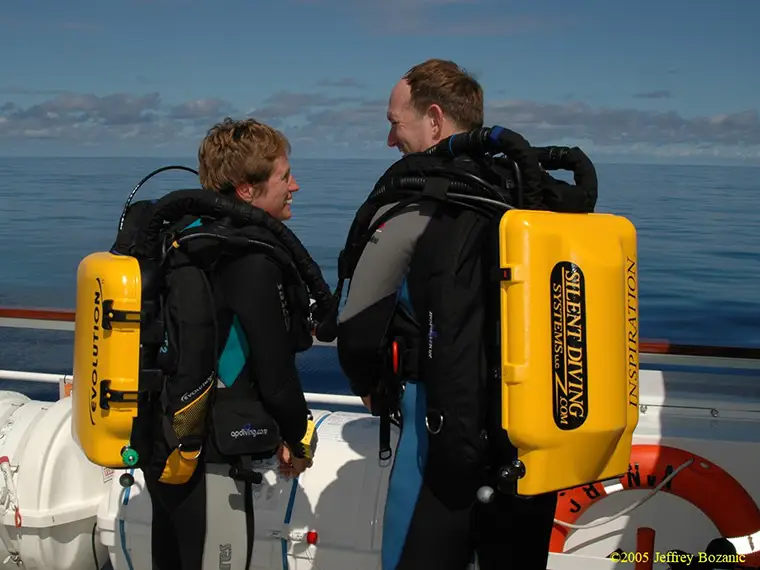
We do the same thing with open circuit equipment. We train on one type of BC inflator (for example a Seatec type device), but students are welcome to purchase or rent a Scubapro inflator, which feels and functions differently. We do the same with regulator first stages (DIN vs. yoke), second stages (bottom vs. side exhaust), cylinders (steel vs. aluminum with their differing buoyancy characteristics), multiple types of dive computers (and dive tables, for that matter), and many other equipment configuration options. Additional training to use, rent, or purchase these alternatives is not required.
This is directly analogous to the rebreather issue, as both open circuit equipment and driving require rapid decision making in some instances, and those decisions have significant bearing and impact on health and safety. With a rebreather, or either of the cited examples, the user knows what they need to do from training, knows that there is a solution or manner of implementing the desired outcome, and merely needs to apply that knowledge to the task at hand. We have ample precedent to change rebreather training to this type of model.
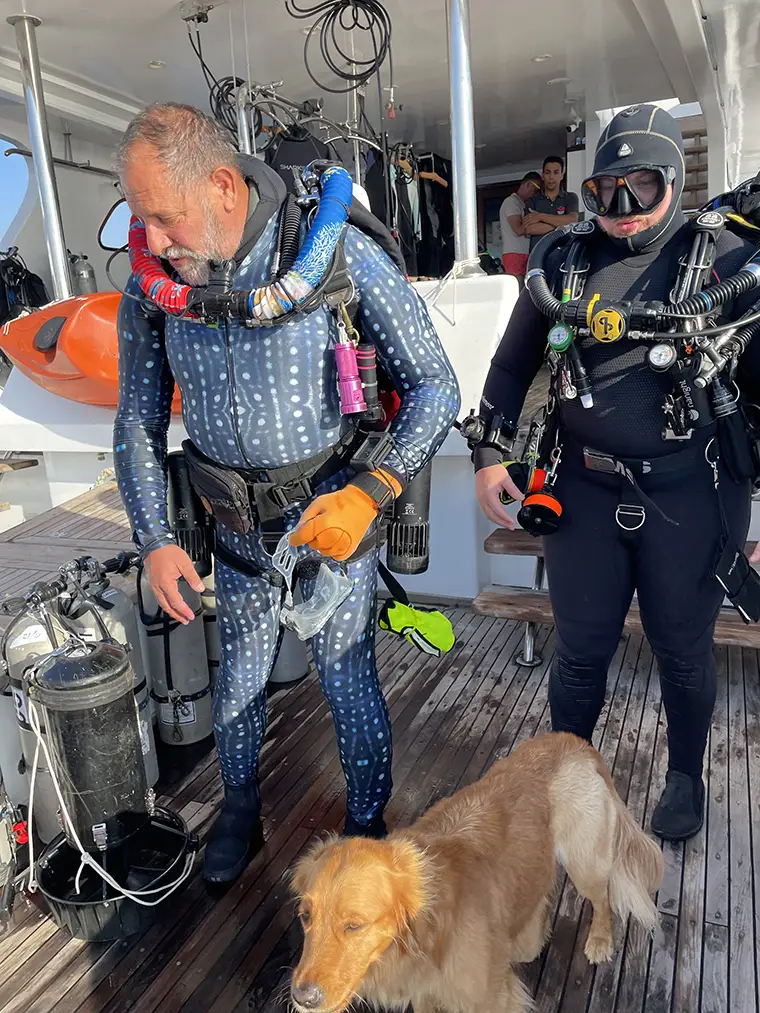
Hardware Design Standards
Implementing a systems approach to training for any type of equipment is easier the more commonality there is between systems. Automobiles have evolved towards a commonality over the years. Braking in vehicles originally relied on the inherent friction and internal resistance of the engines and gear mechanisms to stop. Later, hand levers, foot pedals, and other means were used to activate many different braking systems to slow a vehicle. Eventually, the activation options collapsed to using a foot pedal, which is nearly universal in today’s automobiles. We need to establish similar uniformity in rebreathers.
Rather than trying to establish a set of training standards mandating that users memorize and become comfortable with rebreather controls that are situated in unique positions from one unit to another, manufacturers should use ISO as an opportunity to establish commonalities in systems between the models of rebreathers they produce. This will, in the long run, foster acceptance of rebreathers to a larger marketplace and market segment, which is what we need as an industry if we are to survive and flourish.
You do not see cars with brake pedals on the left, on the right, on the steering column, and on the ceiling. Likewise, we should not locate rebreather controls responsible for the same function in multiple locations or with a myriad of activation techniques. Manufacturers should use the opportunity of ISO standardization to address these issues.
An Opportunity for Evolution
The rebreather market is not large enough to support the new ISO standard mandating that instructors and students wear exactly the same rebreather model using the same configuration. The marketplace is too fragmented, and there are too many configuration options for each rebreather model. Mandating a rule of this sort will not allow for any given instructor to maintain instructional currency as there are an insufficient number of students (given the current market size) to efficiently and cost effectively provide instruction. Class sizes will shrink to occasional single students, as finding more than one student at a time with identically configured units is rare. Course costs will skyrocket, as all rebreather classes will de facto become private courses.
Type ratings for individual rebreather models should be eliminated. In place of that, we should have type ratings only for major rebreather categories: Oxygen CCR, SCR, and mixed gas CCR. Given current market indications, it is foreseeable that probably 95% of type ratings issued will be for mixed gas CCR.
During instruction, we should focus our training on rebreather systems and what they do. Operation of a given system will be taught on a single system, but the user should be informed of other options or alternatives used on other systems. Once certified, the user should be responsible for self-training or for seeking out training on system operations on units within their type rating that they may not have used during their certification course.
During instruction, we should focus our training on rebreather systems and what they do. Operation of a given system will be taught on a single system, but the user should be informed of other options or alternatives used on other systems. Once certified, the user should be responsible for self-training or for seeking out training on system operations on units within their type rating that they may not have used during their certification course.
Manufacturers should use ISO and other opportunities to standardize basic control functions, making it easier for a user to transition from one unit to another.
If we fail to do this, it is my opinion that, while although it may seem that certification programs designed to teach the operation of single systems to end users may seem prudent and effective, the total numbers of divers trained in any single system will not reach the critical mass necessary for any given rebreather company to remain in business. It may seem “safe,” but given the fragmentation and limited numbers, I am afraid that we will be certifying ourselves into eventual extinction. I would hate to see that happen.
Please take a few minutes and share your views on this subject with us: Rebreather Training Survey. We’ll report the results!
DIVE DEEPER
InDEPTH: ISO Training Standards for Rebreather Divers by Mark Caney
InDEPTH: A Perspective on Teaching Cave CCR by Matt Jevon
InDEPTH: How GUE’s Approach to Rebreather Diving Compares to My Previous Courses By Andy Pilley
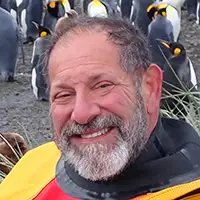
Jeffrey Bozanic has been diving rebreathers since 1988 and teaching the use of rebreathers since the mid-1990s. He has been certified on about 20 different rebreathers, and has taught on about a dozen different units. He is the author of Mastering Rebreathers, the seminal textbook on the topic, and was the senior technical editor of the NOAA Diving Manual (Editions 5 & 6). He has served on the Boards of Directors of NAUI, the Cave Diving Section of the National Speleological Society, the American Academy of Underwater Sciences (AAUS), and the International Underwater Foundation. He has also served on advisory boards for IANTD, SDI-TDI, and many university and NGO diving control boards. He has been recognized for his efforts to promote dive education and safety with the DAN/Rolex Diver of the Year, Beneath the Sea Diver of the Year (Science), NAUI Lifetime Achievement Award, AAUS Conrad Limbaugh Award for Scientific Diving Leadership, and the NOGI Award (Sports/Education).


